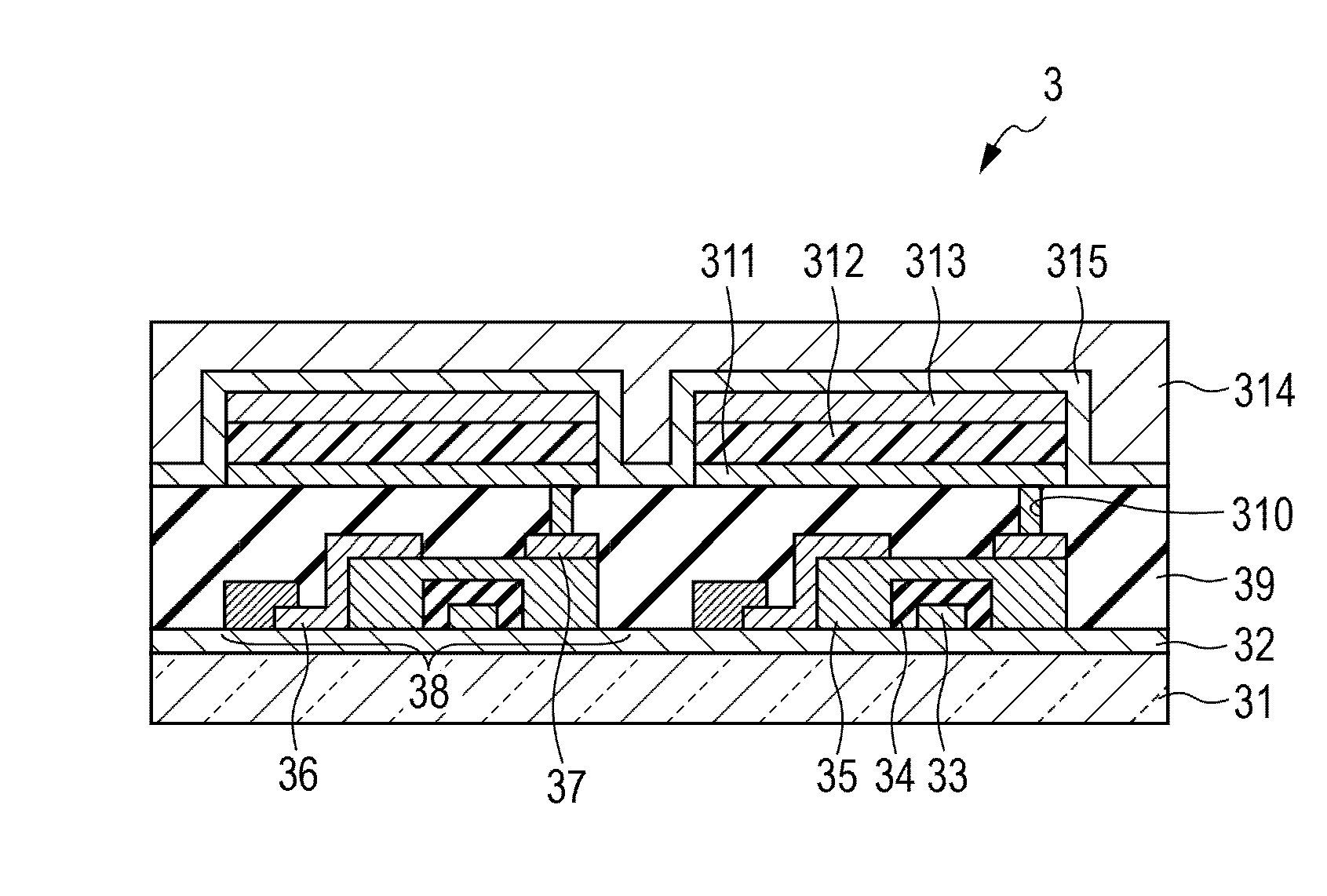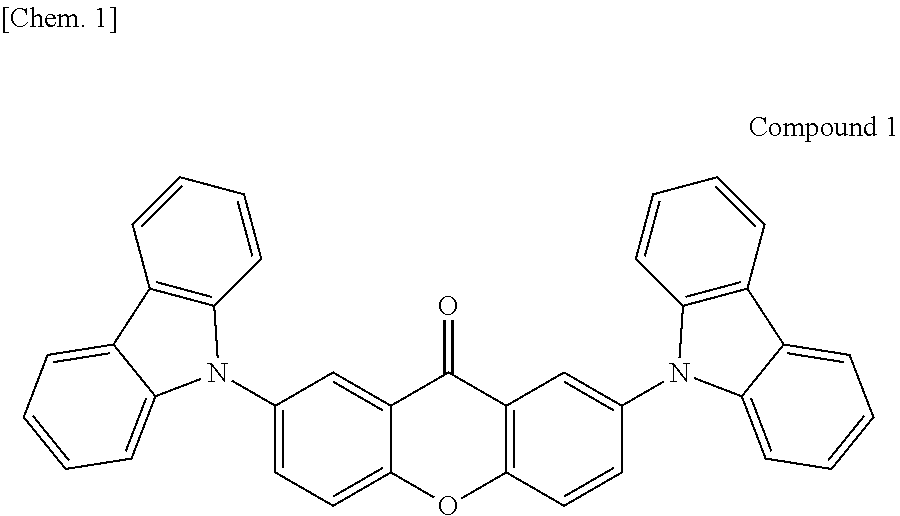Organic light-emitting device
a light-emitting device and organic technology, applied in the direction of solid-state devices, electric lighting sources, electric light sources, etc., can solve the problem that the material is not suitable as a host material, and achieve the effects of low driving voltage, high t1 energy, and high emission efficiency
- Summary
- Abstract
- Description
- Claims
- Application Information
AI Technical Summary
Benefits of technology
Problems solved by technology
Method used
Image
Examples
example 1
Synthesis of Example Compound A-4
[0090]
[0091]The following reagents and solvents were placed in a 100 mL round-bottomed flask.[0092]Xanthone (Tokyo Chemical Industry Co., Ltd.): 5.0 g (26 mmol)[0093]Bromine: 16 g (102 mmol)[0094]Iodine: 50 mg (0.20 mmol)[0095]Acetic acid: 20 mL
[0096]The reaction solution was refluxed for 5 hours at 100° C. under heating and stirring in a nitrogen atmosphere. Upon completion of the reaction, chloroform and a saturated aqueous sodium sulfite solution were added to the reaction solution and stirring was continued until the color of bromine was lost. The organic layer was separated, washed with a saturated aqueous sodium carbonate solution, dried with magnesium sulfate, and filtered. The solvent in the filtrate was distilled away at a reduced pressure. The precipitated solid was purified with a silica gel column (toluene: 100%). As a result, 2.9 g (yield: 41%) of 2-bromoxanthone and 2.2 (yield: 25%) g of 2,7-dibromoxanthone were obtained.
[0097]The follo...
example 2
Synthesis of Example Compound A-5
[0110]
[0111]Example Compound A-5 was obtained as in Example 1 except that 4,4,5,5-tetramethyl-2-(4,4′-di-tert-butylbiphenyl-2-yl)-1,3,2-dioxaborolane used in Example 1 was replaced by 3-biphenylboronic acid.
[0112]M+ of this compound, 500.2, was confirmed by MALDI-TOF MS.
[0113]The structure of the compound was confirmed by 1H-NMR.
[0114]1H-NMR (CDCl3, 500 MHz) δ (ppm): 8.66 (2H, d), 8.06 (2H, dd), 7.91 (2H, bs), 7.72-7.66 (6H, m), 7.66-7.60 (4H, m), 7.57 (2H, t), 7.49 (4H, t), 7.39 (2H, t)
[0115]The T1 energy of Example Compound A-5 was measured as in Example 1. The T1 energy was 446 nm on a wavelength basis.
example 3
Synthesis of Example Compound A-7
[0116]
[0117]Example Compound A-7 was obtained as in Example 1 except that 4,4,5,5-tetramethyl-2-(4,4′-di-tert-butylbiphenyl-2-yl)-1,3,2-dioxaborolane used in Example 1 was replaced by 3,5-diphenylphenylboronic acid.
[0118]M+ of this compound, 652.2, was confirmed by MALDI-TOF MS.
[0119]The structure of the compound was confirmed by 1H-NMR.
[0120]1H-NMR (CDCl3, 500 MHz) δ (ppm): 8.72 (2H, d), 8.13 (2H, dd), 7.90 (4H, d), 7.84 (2H, dd), 7.74 (8H, d), 7.68 (2H, d), 7.51 (8H, t), 7.42 (4H, t)
[0121]The T1 energy of Example Compound A-7 was measured as in Example 1. The T1 energy was 447 nm on a wavelength basis.
PUM
 Login to View More
Login to View More Abstract
Description
Claims
Application Information
 Login to View More
Login to View More - R&D
- Intellectual Property
- Life Sciences
- Materials
- Tech Scout
- Unparalleled Data Quality
- Higher Quality Content
- 60% Fewer Hallucinations
Browse by: Latest US Patents, China's latest patents, Technical Efficacy Thesaurus, Application Domain, Technology Topic, Popular Technical Reports.
© 2025 PatSnap. All rights reserved.Legal|Privacy policy|Modern Slavery Act Transparency Statement|Sitemap|About US| Contact US: help@patsnap.com



